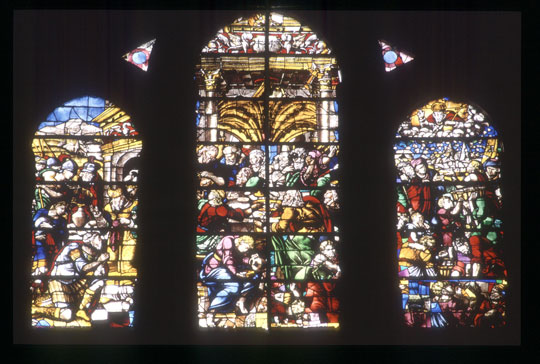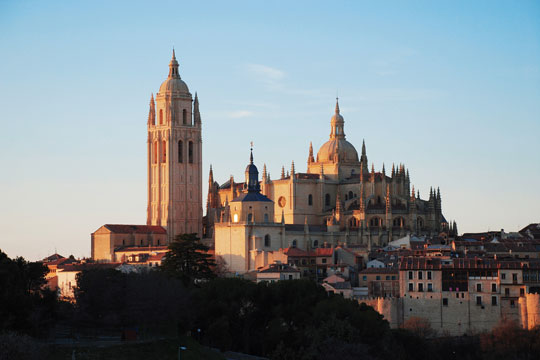Clonado de Cathedral of Segovia

Its complete name is Catedral de Nuestra Señora de la Asunción and San Frutos.
Following the late Gothic Style, the construction begun in 1525 with the non-profit collaboration of segovian people, under the direction of the architects of the family Gil de Hontañon, but it was not consecrated until 1768. This cathedral worked as substitute to the Old one, which was placed in front on the Alcázar, and destroyed in the War of Las Comunidades in 1520.
On the outside, facing west, we can find the main façade, known as Door of el Perdon (Forgiveness), where we find a sculpture of the Holy Virgin by Juan Guas. On the outside it is set the Enlosado, a paved space used nowadays as a scenario for housing cultural activities. The tower, one of the most notable elements due to its height, has been inhabited until mid 20th century by the toller, and is a privileged sightseeing point to the city.
The Door of San Geroteo is opened to the south. He was the first bishop of the city. Facing north, we may find the Door of San Frutos, built in honour of the patron of the city at the beginning of the 17th century.
It has a three-nave floor-plan with transept covered with a dome, drawn by Pedro de Brizuela in the 18th century, with a semicircular apse on the head and an ambulatory, surrounded by chapels.
The grandeur and harmony on dimensions defines the inside spaces, with its beautiful glass stained windows from the 14th century, the choir, which preserves the Gothic set of chairs of the old cathedral, the baroque organs from the 18th century, the collection of grilles or the pulpitum, guarding the relics of San Frutos.
We can find 18 chapels on the inside, decorated with important paintings and sculptures. Some notable examples are the Romanesque Calvary inside the Chapel of El Sacramento; the triple painting of Ambrosius Benson and the altarpiece of La Piedad, from Juan de Juni, in the Chapel of El Santo Entierro, nearby the Door of San Frutos; and the Cristo Yacente from Gregorio Fernández.
The Museum of the Cathedral houses notable art pieces from Pedro Berruguete, Sánchez Coello and Van Orley, and the Cathedral Archives preserves more than 500 incunbula, among them, the Sinodal de Aguilafuente, the first book printed in Spain.


